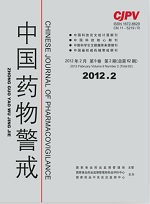|
|
Analysis on the Risk Factors Associated with the Development of Thrombocytopenia in Patients Who Received Linezolid Therapy
CHEN Chao, GUO Dai-hong, CAO Xiu-tang, CAI Yun, WANG Zhi-lin, XU Yuan-jie, ZHU Man, MA Liang, ZHAO Peng-zhi
2012, 9(2):
71-76.
Objective This study investigated risk factors associated with the development of thrombocytopenia in patients who received linezolid therapy and to clarify the reasons and incidence of this adverse reaction. MethodsThis was a restrospective study of patients treated with linezolid by the oral or parenteral route,between January 2011 and May 2011. Data were extracted from the electronic medical records obtained from hospital information system.Thrombocytopenia was defined as a final platelet count of <100×109/L. Risk factors associated with thrombocytopenia in patients who received linezolid therapy were identified via logistic regression analysis,and to predict clinical feature via ROC curves. ResultsIn total, 208 patients(129 men and 79 women; mean[SD]age, 62.67[18.66]years[range,16-98 years]) were included in the study.The mean duration of linezolid therapy was 9.68[6.07]days,with a range of 3 to 39 days.Thrombocytopenia occurred in 59 patients(28.37%), defined as a decrease in platelet count of ≥25% from the baseline occurred in 106 patients(50.96%). Among the patients, 20 patients(9.62%) developed severe thrombocytopenia, requiring platelet transfusion. In univariate analysis, age, lowered creatinine clearance,serum albumin , low baseline platelet count, total bilirubin were significant factors for thrombocytopenia associated with linezolid therapy; however, in multivariate analysis, only age ,baseline platelet count were significant risk factors for thrombocytopenia associated with linezolid therapy. Draw ROC curves maximum, the curve Youden index for 0.739, corresponding area under the sensitivity degrees for 62.71%, specific degrees for 75.84%. ConclusionBaseline platelet count≤204×109/L, age≥82 years were independent risk factors associated with thrombocytopenia in patients who received linezolid therapy and the incidence may increase. Several factors may influence the occurrence of linezolid-induced thrombocytopenia. Further studys are necessary to determine which at-risk patients are candidates for concentation adjustment of linezolid. Furthermore,we can calculate the area under ROC curves to predict these cut off values for risk factors.
References |
Related Articles |
Metrics
|
